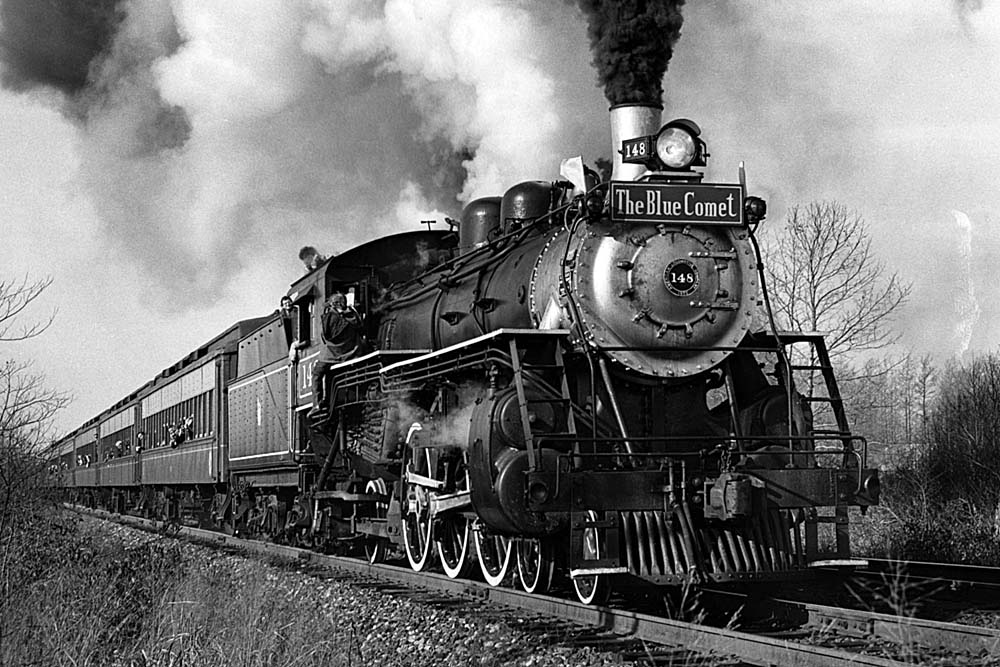
I haven’t counted every last owner one time or another of Florida East Coast 4-6-2 No. 148, but it must be close to a record. For a mainline-size engine, the Pacific was incredibly peripatetic, sort of like former Burlington 2-8-2 No. 4960 before it landed at the Grand Canyon Railway.
The 148 emerged from Alco’s plant in Richmond in 1920, in time for a reasonably long tenure on the FEC, hauling the railroad’s premiere passenger trains between Jacksonville and Miami, plus, for a time, over the star-crossed Key West extension. Its first assignment fulfilled, it was sold in 1952 to U.S. Sugar to haul raw cane across the company’s vast fields surrounding Clewiston, Fla.
After a few years in the sugar business, the 148 moved around like a pinball hitting flippers, first in New Jersey on the Black River & Western tourist line, then another short stint just down the road at the Morristown & Erie, then a dizzying succession of “almost” revivals for operations as far flung as Essex, Conn., Traverse City, Mich., and Monte Vista, Colo.
The 148 wasn’t the only FEC Pacific to bounce around. So did its sisters. As David P. Morgan wrote in a lengthy 4-6-2 tribute in the September 1988 issue of Trains, “Pacifics didn’t lend themselves to resale … But the odds didn’t affect Florida East Coast (they never do, do they?), so in the aftermath of the collapse of the Florida Boom, those trim Alco 4-6-2s that had skimmed across the ocean to America’s Gibraltar — Key West — found homes on (count ’em) Apalachicola Northern; Atlanta & St. Andrews Bay; Atlanta, Birmingham & Coast; Columbia, Newberry & Laurens; Georgia & Florida; Georgia Northern; Savannah & Atlanta; and U.S. Sugar.”
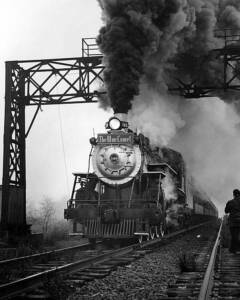
Ditto the 148 as it moved from owner to owner in the Seventies and Eighties. When the engine finally settled down for good, it was back in Clewiston, where in 2016 U.S. Sugar CEO Robert Buker reacquired it to anchor his new Sugar Express tourist operation. An extensive overhaul led by FMW Solutions LLC put the engine back to steam in 2020, and ever since it’s been attracting admirers to the muggy, marshy flatlands south of Lake Okeechobee.
I had a chance to catch up with the 148 a few weeks ago when the Sugar Express was chartered for the annual conference of the Lexington Group in Transportation History, gathering not far away in West Palm Beach. I was impressed. For most of a day we rollicked up and down the U.S. Sugar system, reliving the same experience the late Trains Editor Jim Wrinn had just a couple of years ago. Jim can say it for both of us: “I found it to be the spirited Pacific I’d expected,” he wrote. “It steamed freely, ran smoothly, and cut a graceful silhouette as it rolled up to 40 mph through the cane fields.”
U.S. Sugar 148 is familiar with the spotlight, especially after Dec. 25, 1975, when, quite improbably, it appeared on NBC’s nightly talk show “Tomorrow,” hosted by Tom Snyder. Back in the mid-Seventies, Snyder was a media heavy hitter, known as much for his hyper, quirky personality as for his penetrating interviews. Not for nothing did “Saturday Night Live” stalwart Dan Aykroyd make hay with his Snyder impersonations.
Turns out Snyder had a soft spot for trains — he was big into toy trains — which led to the memorable “Tomorrow” episode, taped Dec. 6 when the host rode a special excursion in New Jersey featuring the 148. In those days the engine was owned by Sam Freeman and ran regularly on the Morristown & Erie, lettered “Whippany River.” For this special day it was in the guise of Central of New Jersey’s former Blue Comet passenger train, running jointly on the CNJ and New York & Long Branch from Raritan River down to Bay Head.
Decked out in pinstripe overalls and gauntlets, Snyder managed to get some time in the 148’s snug cab, along with interviewing a couple of actual railroad celebrities: Rogers E.M. Whitaker, a.k.a. E.M. Frimbo, the longtime New Yorker staffer and celebrated train traveler, and Oliver Jensen, editor of American Heritage and long associated with Connecticut’s Valley Railroad.
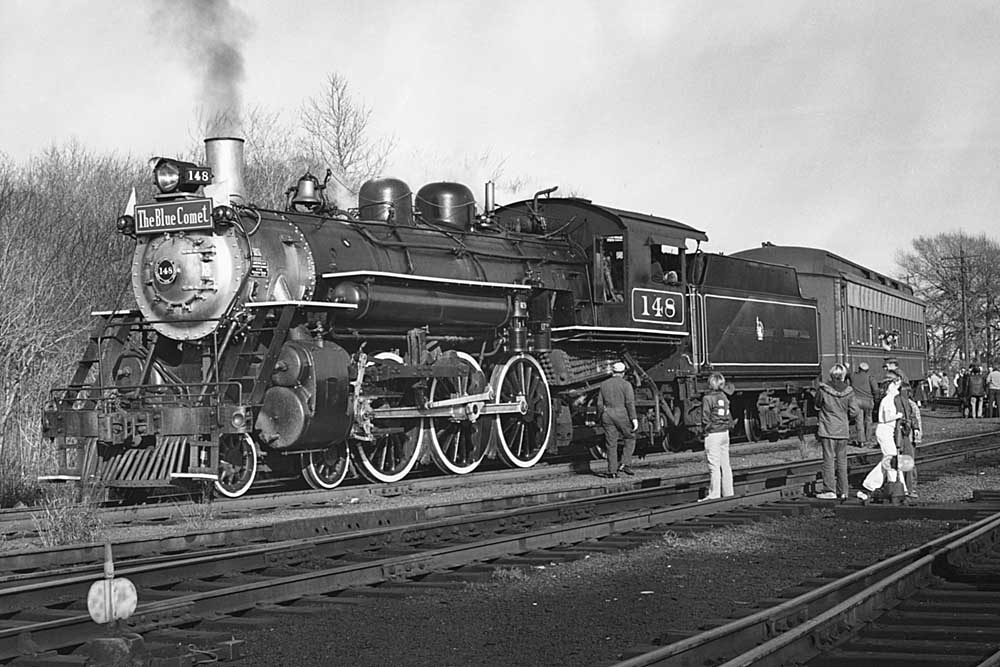
Another person along for the trip was Howard Pincus, today the president of Connecticut’s Naugatuck Railroad and in those days a young fan involved with a group called the Mainline Steam Foundation, which leased the 148. Their trips included one on Erie-Lackawanna in north Jersey, another on the Lehigh Valley along with George Hart’s Canadian Pacific 4-6-0 No. 972, plus the “Tomorrow” trip.
Howard has had quite a career in both railroading and railroad preservation, with an emphasis on steam, and those 148 trips — especially the Blue Comet gambit — were formative for him, especially since he’s an Erie fan. “I was in my early twenties, and seeing a light Pacific ride the rails that similar Erie engines had rolled over 25 years before was extremely cool. I was part of the Mainline Steam Foundation crew and 148 provided me with many adventures that year. Riding through the big tunnel on the LV, roaring down the Long Branch at 60-plus mph, servicing the engine in the rain at Bethlehem — it was all amazing. It became part of my DNA.”
Beyond running trains, Howard is handy with a camera, as attested by his photos here from that “Tomorrow” trip. If you look carefully, you can see he caught some of the NBC crew doing their thing from various — and perilous — positions on the engine. Now, nearly 50 years later, he’s pleased to see the engine back in Florida. “Her admirers and handlers — I’m in both categories — always thought she deserved a good home,” he says, “one with the resources to put back all the miles wrung out of her after Florida East Coast. She finally found it.”
I don’t remember much about that “Tomorrow” episode, although I’m sure I watched it. I was a bit of a Snyder fan in those days. For an excellent account of the Blue Comet segment, see writer Michael Boland’s account in the August 1976 issue of Trains, offering a real primer on location TV production in those days. You can also find at least two very grainy segments from the “Tomorrow” episode on YouTube, including Snyder’s illuminating interview with Sam Freeman.
Meanwhile, if you love steam, you owe it to yourself to get down to the cane fields to ride the Sugar Express. The U.S. Sugar system has 300 miles of heavy-duty railroad, much of it available to U.S. Sugar 148. I’ll let Jim Wrinn have the last word: “Whether on a train with cars used to transport sugar cane to the mill, replaying her role in the 1950s and 1960s, or sprinting with a three-car passenger train, No. 148 (has) proved herself to be a most apt representative of this type of steam locomotive.”
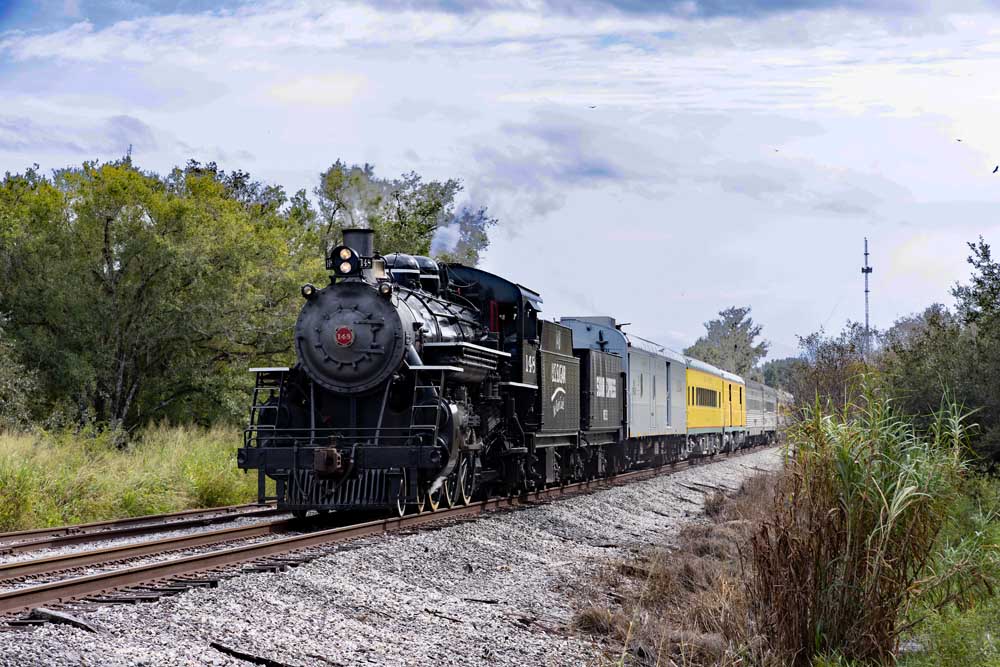






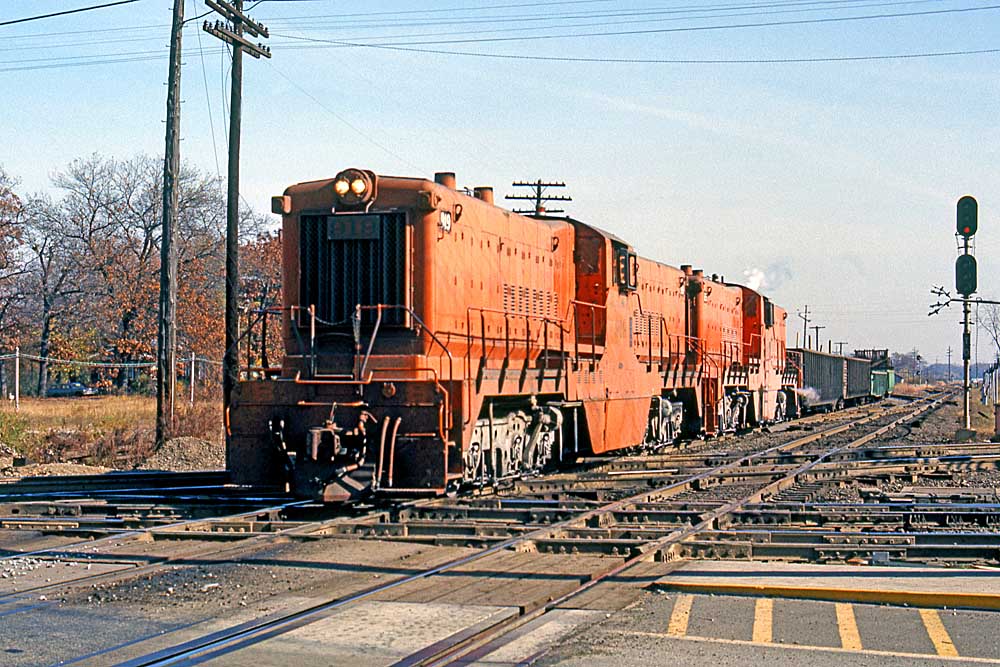
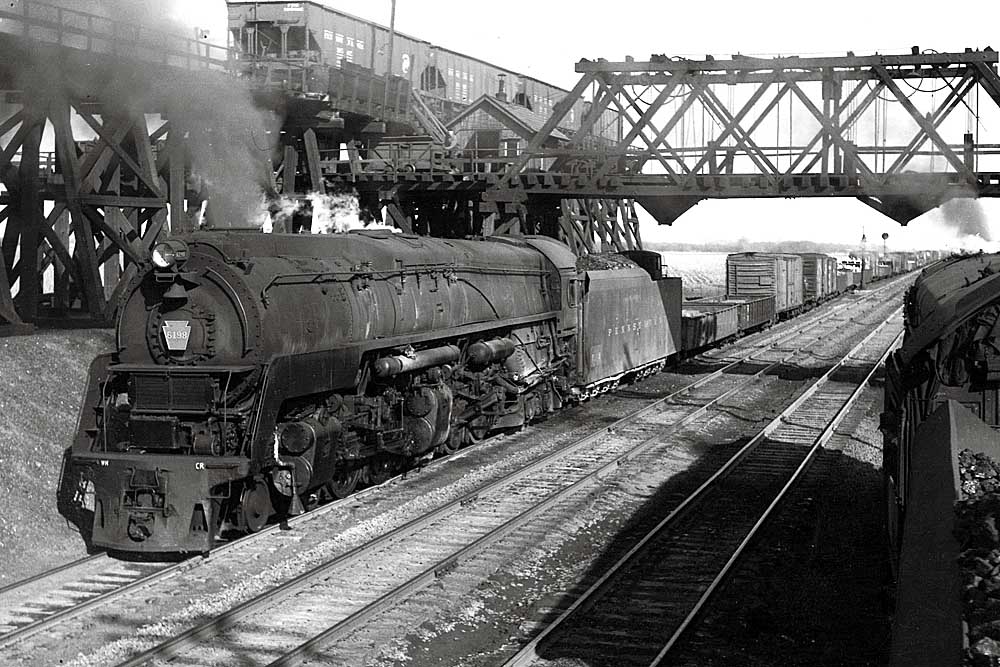
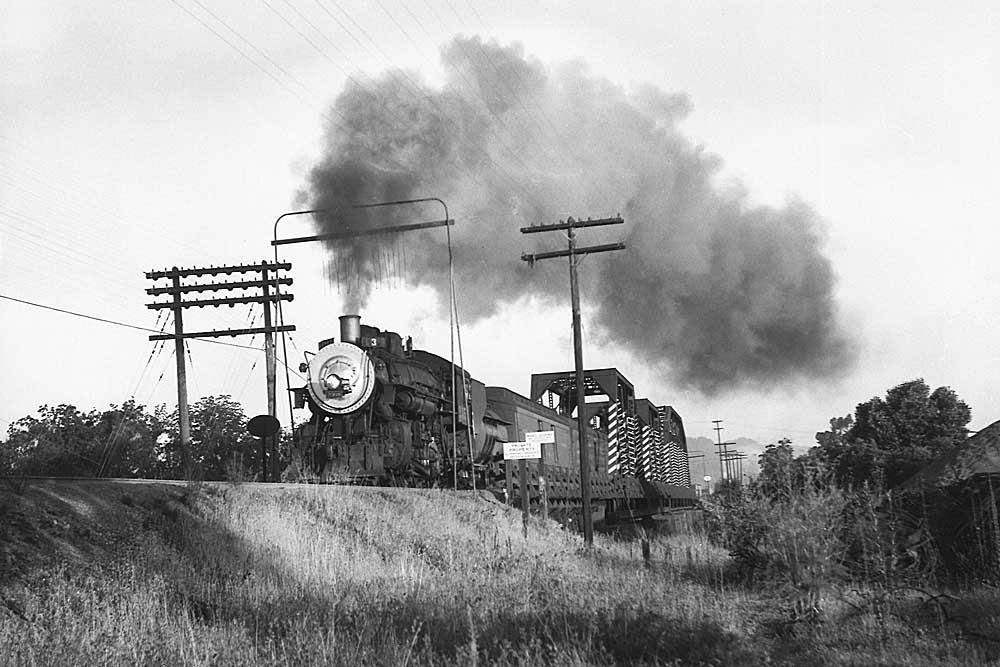
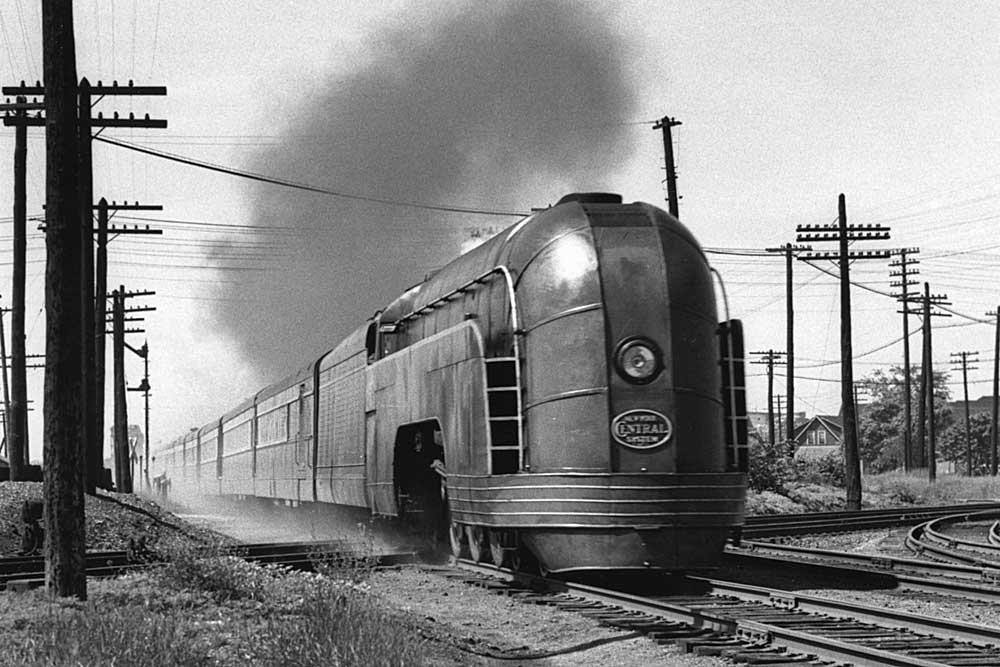




During the summer of 1975 I was a trainman at the New Hope & Ivyland Railroad. 148 was being overhauled in the New Hope engine house and was used several times on our regular excursions, mostly for the shop guys to do some break-in and fine tuning. I remember leaving town with several guys hanging out the cab windows and from the footplate and the ladder to the cab watching the running gear and listening for rubbing. One unique thing was that 148 faced north and was the only steam locomotive that left New Hope on excursions tender first. I also remember some of the old heads saying that as an oil-burner the railroad did receive some complaints from trackside pool owners who had gotten used to having to vacuum cinders from their pools but didn’t know what to do with the thin film of oil from 148 that formed on the top of the water. Don’t know if that really happened or not but it made an interesting story. Along with #40 and the Baldwin diesels, having 148 thrown in made for a wonderful summer in Bucks County. Wil Harkins